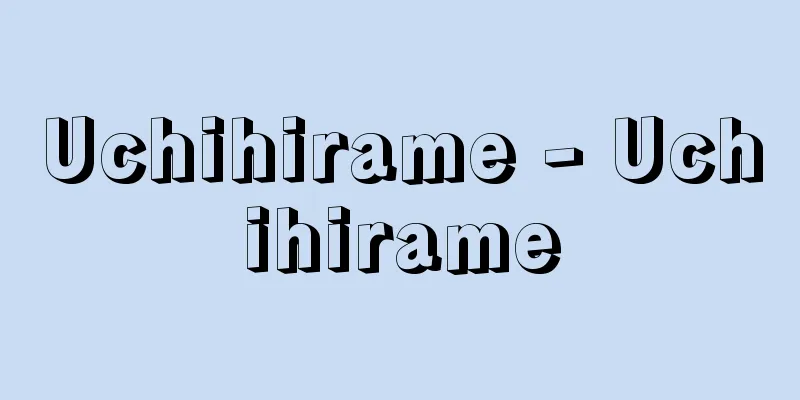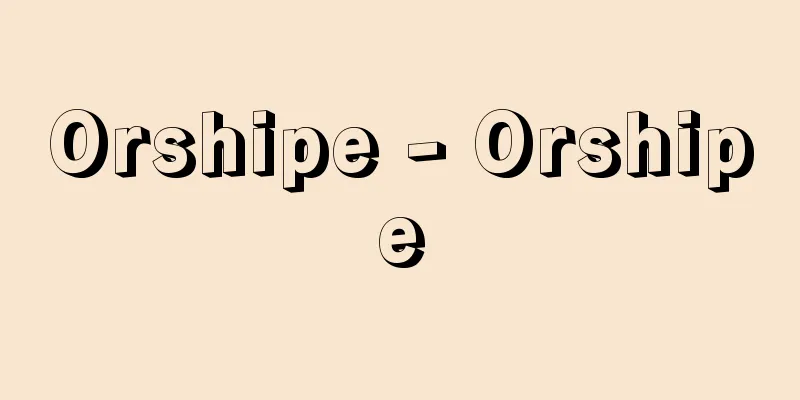Kiwi - Kiwi (English spelling)

|
A general term for birds belonging to the order Struthionica and the family Kiwi family. This family, Apterygidae, is endemic to New Zealand and consists of one genus, Apteryx , and is divided into three species: the striped kiwi A. australis , the great spotted kiwi A. haastii , and the little spotted kiwi A. owenii . They are 48-84 cm long and weigh 1.35-4 kg. Females are larger than males. Their whole body is covered with coarse brown or gray feathers. Their wings are degenerate and they cannot fly. Their tails are also degenerate. Their beaks are long and thin and slightly curved downwards, and their legs are short but very strong. They live in dark forests, hiding under rotting trees or in underground holes during the day and are active at night. Because they are nocturnal, their eyes are somewhat degenerate, and their senses of smell, touch, and hearing are well developed. They feed on earthworms, insects and their larvae, and forage for prey by inserting their beaks deep into the mud. They also eat roots and seeds and berries found above ground. They build their nests under fallen trees or deep in underground holes. The eggs are white, and each clutch usually contains one or two eggs. Only the male incubates the eggs, and they hatch in about 75 days. The chicks forage for food on their own from about one week after they are born, but the male protects them from predators until they grow up. Males make a sharp cry, "kiwi." The English name "kiwi" is the name given by the indigenous Maori, but originally comes from the sound of their cry. The kiwi is the national bird of New Zealand, and is used on coins, stamps, and as a trademark for the country's main products. The bird was once close to extinction, but is said to have increased in number considerably today. [Hiroyuki Morioka] Smithsonian Institution "> Vertical striped kiwi Source: Shogakukan Encyclopedia Nipponica About Encyclopedia Nipponica Information | Legend |
|
鳥綱ダチョウ目キーウィ科に属する鳥の総称。この科Apterygidaeはニュージーランドの特産で、キーウィ属Apteryx1属よりなり、タテジマキーウィA. australis、オオマダラキーウィA. haastii、コマダラキーウィA. oweniiの3種に分類される。全長48~84センチメートル、体重1.35~4キログラム。雌は雄より大きい。全身褐色または灰色の粗い毛状の羽毛で覆われている。翼は退化し、飛ぶことはできない。尾も退化している。嘴(くちばし)は細長くやや下に湾曲し、足は短いがきわめてじょうぶである。暗い森林にすみ、昼間は朽ち木の下や地下の穴の中に身を隠していて、夜間に活動する。夜行性のために、目はいくぶん退化し、嗅覚(きゅうかく)、触覚、聴覚はよく発達している。食物は土中のミミズや昆虫とその幼虫類で、嘴を泥中に深く差し込んで獲物をあさる。また、根や地上の種子や漿果(しょうか)も食べる。巣は倒木の下や地下の穴の奥につくられる。卵は白色で、1腹の卵数は通常1、2個。抱卵は雄だけが行い、卵は約75日で孵化(ふか)する。雛(ひな)は生後1週間ぐらいから自分で餌(えさ)をあさるが、大きくなるまで、雄が外敵から保護する。雄は鋭い声でキーウィと鳴く。英名のkiwiは、先住民マオリの呼び名であるが、もともとは鳴き声に由来する。キーウィはニュージーランドの国鳥で、コイン、切手、主要な産物の商標などに使われている。一時絶滅に近くなったが、今日ではかなり増えているといわれる。 [森岡弘之] スミソニアン協会"> タテジマキーウィ 出典 小学館 日本大百科全書(ニッポニカ)日本大百科全書(ニッポニカ)について 情報 | 凡例 |
>>: Legislative proposal - Giinrippo
Recommend
Shark attack
...A general term for sharks that harm and someti...
Principal - Headmaster
The person in charge of a school is appointed und...
Josetsu - Josetsu
Years of birth and death unknown. A painter-monk ...
Cut sushi - Cut sushi
…This is how box sushi (pressed sushi) was invent...
erythema mycoticum infantile
...Changes are not noticeable deep within large w...
"The Story of Iwata Yasohachi" - The Story of Iwata Yasohachi
…Together with Tamenaga Harusho (commonly known a...
Kawachi Yakko
…Breeds that are enjoyed for their beautiful appe...
Earth - Tutsi
1. Rocks broken down into a coarse powder. Soil. &...
Jörg Wickram
1505?‐62? German novelist. Born and raised in Colm...
regulator
...a clock used to keep standard time. Historical...
consumer
...In addition to green plants, producers include...
Macroscopic physical quantity - macroscopic physical quantity
...The average value converted to a unit area is ...
Safe takeoff speed - Anzenririkusokudo
…Let’s take a jet transport plane as an example a...
Rickman, Thomas
Born: June 8, 1776, Maidenhead Died January 4, 184...
Refusal to eat
This refers to a refusal to eat, and is also know...









